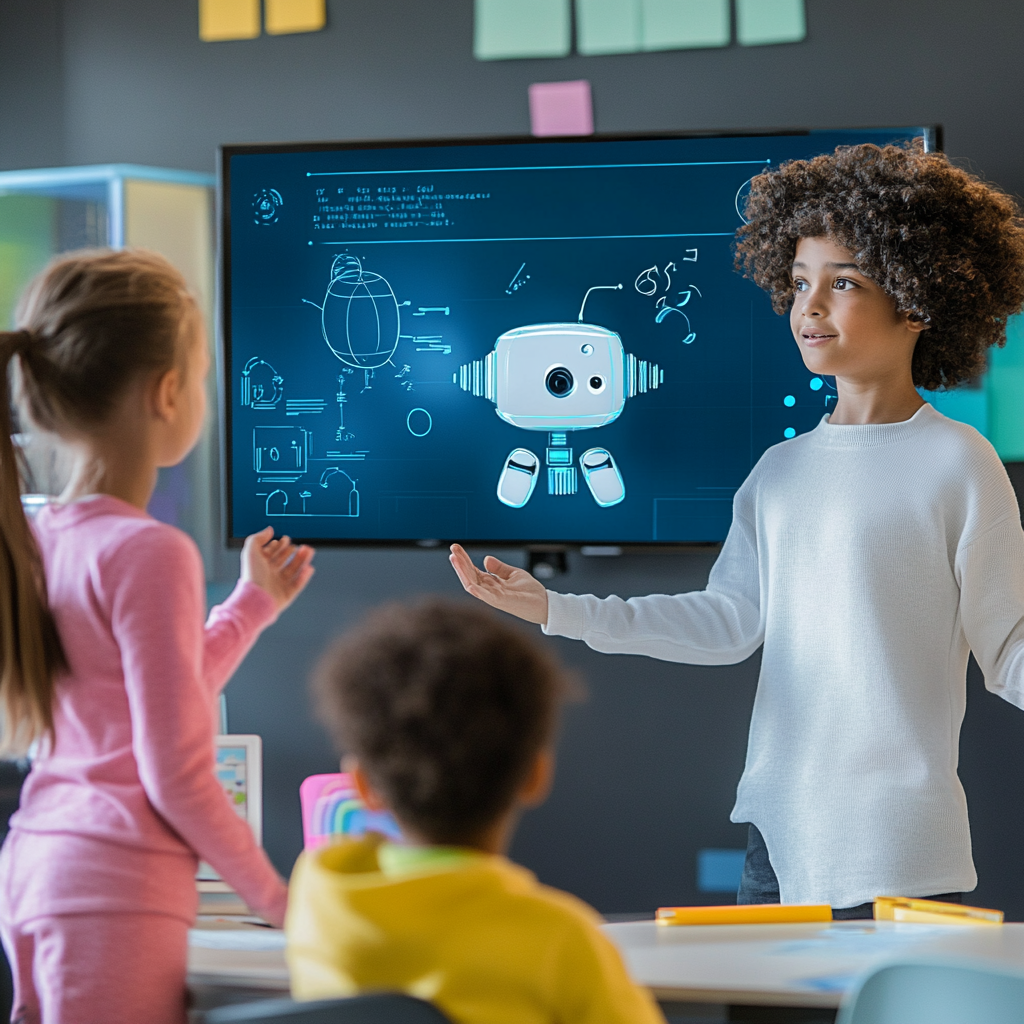
Generative AI Technology: A Game-Changer for STEM Education
Share
Introduction
The rise of generative AI technology has been nothing short of revolutionary, especially in the field of education. When applied to STEM (Science, Technology, Engineering, and Mathematics) education, generative AI offers students and educators innovative tools to enhance learning, foster creativity, and simulate complex real-world scenarios. In this article, we’ll explore how generative AI is changing STEM education, from providing personalized learning experiences to empowering students to create their own interactive content and projects.
Understanding Generative AI Technology
Generative AI refers to the branch of artificial intelligence that focuses on creating new content, whether it’s text, images, videos, or even entire interactive experiences. Unlike traditional AI, which often focuses on analyzing and processing data, generative AI can generate new and unique content based on patterns learned from existing data.
For example, a generative AI system could analyze large datasets to create realistic simulations of scientific phenomena, generate interactive 3D models, or even produce educational games that teach complex STEM concepts. The potential for generative AI in education is vast, and its applications are already being seen in classrooms around the world.
How Generative AI Enhances STEM Learning
Generative AI tools have the power to transform STEM education by making learning more interactive, immersive, and personalized. Here’s how:
Creating Interactive Simulations: Generative AI can be used to create highly realistic simulations that allow students to explore STEM concepts in a hands-on way. For example, students can interact with virtual physics experiments, manipulate chemical reactions in a lab simulation, or explore complex mathematical models in 3D. These types of interactive experiences help students better understand abstract concepts that may be difficult to grasp through traditional textbook learning.
Personalized Learning Paths: Every student learns at a different pace and in different ways. Generative AI can create personalized learning paths based on a student’s strengths, weaknesses, and preferences. For example, if a student is struggling with a particular math concept, the AI system can generate additional practice problems and explanations tailored to their needs. If a student excels in a topic, the system can provide more challenging material to keep them engaged and motivated.
Encouraging Creativity and Innovation: One of the most exciting aspects of generative AI is its ability to empower students to create their own content. In STEM education, students can use AI tools to design their own experiments, create simulations, and even develop educational games. This fosters creativity and allows students to take ownership of their learning. With tools like Nibiru Creator, students can design interactive projects that demonstrate their understanding of complex STEM concepts while also developing critical skills in problem-solving, coding, and digital creation.
Real-World Applications of Generative AI in STEM Education
Generative AI technology is already being used in various educational settings, especially in STEM fields. Here are a few examples of how this technology is being applied:
Virtual Chemistry Labs: In traditional chemistry classes, students conduct experiments in physical labs, but due to time and resource constraints, not all experiments can be performed in the classroom. Generative AI allows students to run virtual chemistry experiments in a safe, controlled environment. They can simulate chemical reactions, test hypotheses, and explore the effects of different variables—all without the need for expensive lab equipment.
3D Modeling and Simulation: Generative AI tools enable students to create detailed 3D models of scientific phenomena, such as molecular structures or physical systems. These models can be manipulated and explored in virtual environments, allowing students to visualize complex concepts in ways that textbooks simply can’t. For example, students can use AI to design their own physics experiments or model the behavior of natural systems, from climate change to the behavior of ecosystems.
AI-Generated Educational Games: Another application of generative AI in STEM education is the creation of educational games. AI-powered platforms can generate games that teach scientific principles in a fun and engaging way. For instance, a game might simulate the challenges of building a sustainable energy system, teaching students about renewable energy sources while allowing them to experiment with different strategies. These games help students apply what they’ve learned in a hands-on, interactive way.
Benefits of Generative AI for STEM Educators
For educators, generative AI tools offer a range of benefits, from reducing workload to enhancing lesson quality:
Enhanced Lesson Creation: Educators can use generative AI tools to create customized lesson plans, simulations, and interactive content quickly and easily. These tools automate many aspects of lesson creation, allowing teachers to focus more on student engagement and support. Platforms like Nibiru Creator enable educators to design interactive lessons that cater to the needs of individual students, ensuring that each lesson is both effective and engaging.
Real-Time Feedback: Generative AI systems provide real-time feedback to students, helping them learn more efficiently. For example, if a student is working on a math problem, the AI system can analyze their solution and provide immediate feedback, suggesting areas for improvement and offering additional practice questions if needed. This immediate feedback helps students stay on track and reinforces learning in real-time.
Data-Driven Insights: Generative AI tools can analyze student performance data to identify trends and patterns, providing educators with valuable insights into how their students are progressing. For instance, if a class is struggling with a particular topic, AI tools can suggest resources or adjust lesson plans to address the gap in understanding. These insights help educators make data-informed decisions and improve their teaching strategies.
The Future of Generative AI in STEM Education
As generative AI continues to evolve, its potential for transforming STEM education will only grow. In the future, AI tools could become even more integrated into the classroom, providing real-time, adaptive learning experiences that respond to the needs of each student. Additionally, generative AI could help automate administrative tasks, such as grading and assessment, giving educators more time to focus on teaching and student support.
We may also see the development of more advanced AI-powered simulations and virtual environments that allow students to explore complex scientific concepts in ways that were previously unimaginable. For example, students could step into a fully immersive, AI-generated virtual world where they can interact with historical events, conduct complex experiments, or explore scientific principles in real-time.
Generative AI is poised to revolutionize STEM education by making learning more personalized, interactive, and engaging. By providing students with powerful tools to create their own content, experiment with complex concepts, and receive real-time feedback, AI is helping students develop critical skills in problem-solving, creativity, and innovation. For educators, generative AI offers a range of benefits, from enhancing lesson creation to providing valuable insights into student performance. As AI technology continues to advance, its role in STEM education will only continue to grow, opening up new possibilities for both students and educators alike.
